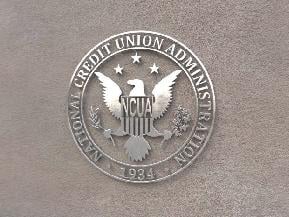WEST PALM BEACH, Fla. – Credit unions are hitting the runway to help define “business casual” and the employees love it. Rather than just referring staffers to the employee handbook, Peoria, Illinois-based Citizens Equity First Credit Union and Jackson, Michigan-based American 1 Federal Credit Union have opted for a fashion “show-and-tell” method to reinforce just what is acceptable. “When we started working on the dress code in 1991 it was a binder filled with an extensive detailed account of every type of clothing that existed at the time and we had a hard time keeping up with the trends and styles,” said CEFCU Vice President of Human Resources Melody Filarski. “When we made the switch in 2000 to a more relaxed professional attire-we stayed away from the word `casual’ because it can be subject to any interpretation- we hired a professional consultant to help us write a new policy which has gone from a huge binder to just four pages.” Filarski says the policy now focuses more on the overall outfit and image that CEFCU would like to portray to members. With former model now CEFCU Personnel/Payroll Coordinator Tammie Fletcher’s expertise, the credit union launched its first fashion show in Fall 2001. Employees were tapped as models and Fletcher worked with local department stores to provide the clothing and coupons for staffers. Out of 750 employees some 275 attend the event. “The fashion show is a great way to help employees with the subtle nuances of pulling a more polished yet relaxed professional look together,” said CEFCU Personnel Manager Jodi Schellenger. “The feedback we were getting from employees was that they know how to dress at home but were not as confident in the new relaxed look for work. They really enjoy the fashion show and they tell us they also pick up great tips on how they can sharpen their appearance.” American 1 Federal Credit Union Vice President of Communications Sharon Kegerreis agrees, adding that the fashion show has become so popular that the credit union has opened it up to the community. Models include a mix of employees and local college students. “We take our dress code a little more seriously and emphasize a real tailored look to build on our professional presence in the community. There was a time when suits were required everyday, then the switch to business casual got a little sloppy,” said Kegerreis. “Upper management felt there could be a better way to educate employees on what was appropriate and we quickly realized that a live demonstration was not only a creative solution but it would also make the whole process a lot of fun. Our 120 employees love it and a majority of them look forward to attending.” As an added incentive to attend the fashion show and build a better wardrobe, each employee receives an interest-free loan to purchase clothing for work. Staffers who attend the show receive $600 in loans while those who opt to stay home can still receive a $200 loan. Kegerreis says loans can be used anywhere and are repaid through payroll deduction. In addition, prizes of gift certificates and discount coupons are awarded throughout the event. “The loans really send a message that we stand behind our dress code as a brand image,” said Kegerreis. “It also helps some of our employees who maybe recently graduated from college get a head start on their professional business casual wardrobe.” According to both credit unions, it takes anywhere from two to six months to prepare fashion shows and partnerships with local vendors and department stores are the key to success. In addition, models should be representative of all ages, shapes, sizes and gender. At CEFCU the fall and spring shows feature some 20 employees/models who can do anywhere from two to three sets of clothes. “Pay attention to details and the setting,” said Fletcher. “We use an outside banquet facility and make the most of the entire experience from providing dinner and gift bags to coordinating the music and giveaways, we want the employees to have fun with it.” Schellenger adds that beyond having a good time and educating staffers on fashion dos and don’ts the biggest reward comes from the members. “Everyone has to support it because the image the staff portrays to members impacts their view of your credit union as a whole,” said Schellenger. “It is just knowing your members. For example we did focus groups and our members told us that they want our employees’ attire to project professionalism and that they lose confidence in our abilities to serve them if employees are sporting say jeans and a t-shirt.” Both credit unions agree that to keep the dress policy on top of employees’ minds it takes more than just a fashion show but dedicated efforts on the part of management and providing constant communications from quarterly seminars to providing reminders in newsletters or posting wardrobe expectations over the intranet before each season. [email protected]




 Copyright © 2024 ALM Global, LLC. All Rights Reserved.
Copyright © 2024 ALM Global, LLC. All Rights Reserved.










